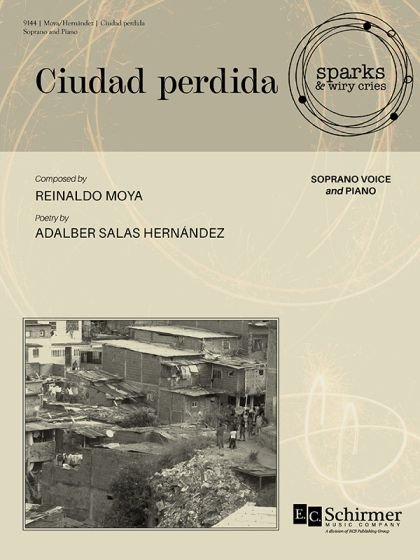IMAN HABIBI | We Live in a Singing World
Composer Iman Habibi reflects on the power of song in climate activism.
We live in a singing world. Growing up in the ’90s in the post-war metropolis of Tehran, my family, like many others, would often take refuge in shomal (“North”), a beautifully green and lush area between the Alborz mountains and the Caspian Sea. We were mostly off-grid. The well water was unsafe to drink so we had to drive to the nearest town to fill large containers with drinking water. Electricity was intermittent and more often out, so we relied on oil heaters and gas stoves, and to make phone calls, we had to drive to a call center in the nearest town. There was a lot of time to spend alone, in the company of family or nature, with the citrus and pomegranate trees my grandfather had planted, which made a sublime addition to the fragrant jasmine and rose bushes.
As a child, I remember walking through laurel-hedged gardens speaking to dew-dropped leaves. The fig tree was a perfect climb, and I took my books there to read, taking extra care to not touch the white fig sap or the leaves that could easily irritate the skin. The small ants loved climbing the sweet fig tree too, and that was perfectly fine by me. I always enjoyed watching ants at work, laboriously carrying things up and down the branches. In a clearing of clouds, the night sky enshrined its glittering treasure chest. You didn’t have to look up for long to see a shooting star. The background music was divine; the birds took care of the descant, and the pedal came from the sea breeze as it rustled through a row of stout poplar trees across the street. If I close my eyes, I can still hear the poplar trees. The roosters were the most reliable alarm clocks. The small tractors on the road or the song of the adhan (prayer call) from the mosque of the nearby village were gentle reminders that other people were around.
Over the many years of visiting that place, I witnessed a transformation: the Caspian Sea water and shore became increasingly soiled, until smaller fish were no longer safe to consume and swimming was discouraged. The roads were widened into a highway and suddenly traffic was a thing. Undeveloped land, what was once abundant, became scarce. So they cut the magnificent tall poplar trees to build… was it a restaurant or an apartment? Some thrived in the real estate market and cherished the tourist economy. I slowly lost a childhood refuge, like losing a dear friend. Three decades later, I still dream of this place often. I search for it like one would search for the name of an earworm one can’t fully remember, just to hear it one more time.
This brief story of personal loss no doubt colours my climate activism today. But this story is far from singular. I am sure you have heard it before, perhaps experienced it yourself. Speaking to or reading the works of other climate activists, or hearing weekly from my Composing Earth colleagues at the Gabriela Lena Frank Creative Academy of Music (GLFCAM), I confront this story time and time again. The locations are often different, but the narrative is quite similar: stories like these are at the heart of our community at Composing Earth. After all, many of us musicians are storytellers too. They bring to mind what Lieder enthusiasts know all too well as sehnsucht, a longing for a world that once was, or a desire for one that can be. I slowly realize that our gatherings are less about learning, and more about remembering. We are trying to remember the song of the earth.
Composing Earth, which I now have the privilege of mentoring, gathers a small group of accomplished composers and provides them with a study stipend for a two-year program which ultimately leads to the commissioning of a composition from each composer. In the first year, guided by Utah State University physics professor, Robert Davies, we learn about the science of climate change. This often starts with a grim awakening as we recognize the sheer urgency and scale of it all. We then read about some of the pathways forward, and reimagine a better future. We assess the efficacy of different approaches, artistic or otherwise, in communicating the message of the climate crisis, and we look at how other artists active in the field are already approaching the topic. We share our own music at every meeting. We often recognize that a new artistic approach may be necessary to narrate the times that normalize the unprecedented.
Wednesdays are musing days; we take turns to write emails to the group, what my dear friend, mentor and the program founder, Gabriela Lena Frank, fondly refers to as “love letters.” On any one of these love letters, you may read a story like the one I shared with you above, or you may find a link to a work of art, an article, a poem, or a book recommendation. The diversity of voices present in any Composing Earth cohort allows us all to gain a better perspective of the world at large. It is important to be reminded of the issues troubling people of various backgrounds, living in various conditions, and in different parts of the world.
In the second year, and equipped with the above, each composer is commissioned to compose a piece on a climate-related topic of their choosing. The selection is vast: climate justice, as an umbrella term, has its footprints on just about every aspect of our lives, from social justice or domestic abuse to migration, from birdsongs and biodiversity to geopolitical conflicts across the planet. Recognizing the interconnectivity of it all is an important part of the journey.
I hear repeatedly from the scientists I speak to that we already possess all the science and technology we need to mitigate climate change. We are missing the collective will to effect the systemic change needed to achieve it. As a cultural worker, I find it is my responsibility to cultivate this will. As a creator, it is my job to visualize a better world to serve as a compass today. As a storyteller, it is my duty to tell the stories of those who suffer from injustice as I type, injustice that climate change may have caused or will aggravate.
“The world still sings, but we have become quite adept at tuning out its song.”
I must confess that it is extremely challenging to do all this through instrumental music alone. We often have to resort to the margins, the title of the piece, the programme notes, or the pre-concert talks and interviews to communicate the specifics. It is of no help that these margins are often overlooked; composers aren’t always given a chance to speak or may not always be present at a performance. Program notes aren’t always printed or read. Music that is accompanied by words can achieve this end with greater ease. Songs, in particular, can be powerful tools for communication. Being sung, using an instrument we all possess, they are often easier to replicate, remember, and internalize, making them more likely for the listener to carry the music with them beyond the performance. They have a directness and rawness that allow them to be powerful messengers.
The world still sings, but we have become quite adept at tuning out its song. The music that once guided our ancestors in just about every aspect of their lives often falls on deaf ears. Our saturated sound world has taught us selective listening, and it concerns me that we are losing sight of what is important to hear, protect, and cherish. As a composer, sitting at my desk every day, examining an endless array of possibilities as I move from one musical moment to another, I have to often ask myself if an objective truth guides my process, and where I may be able to find it. What is good music? Who determines greatness? In moments like these, I can close my eyes, grateful to still be grounded by the song of the Northern sea breeze as it passes through the poplar trees.
January 14, 2025






